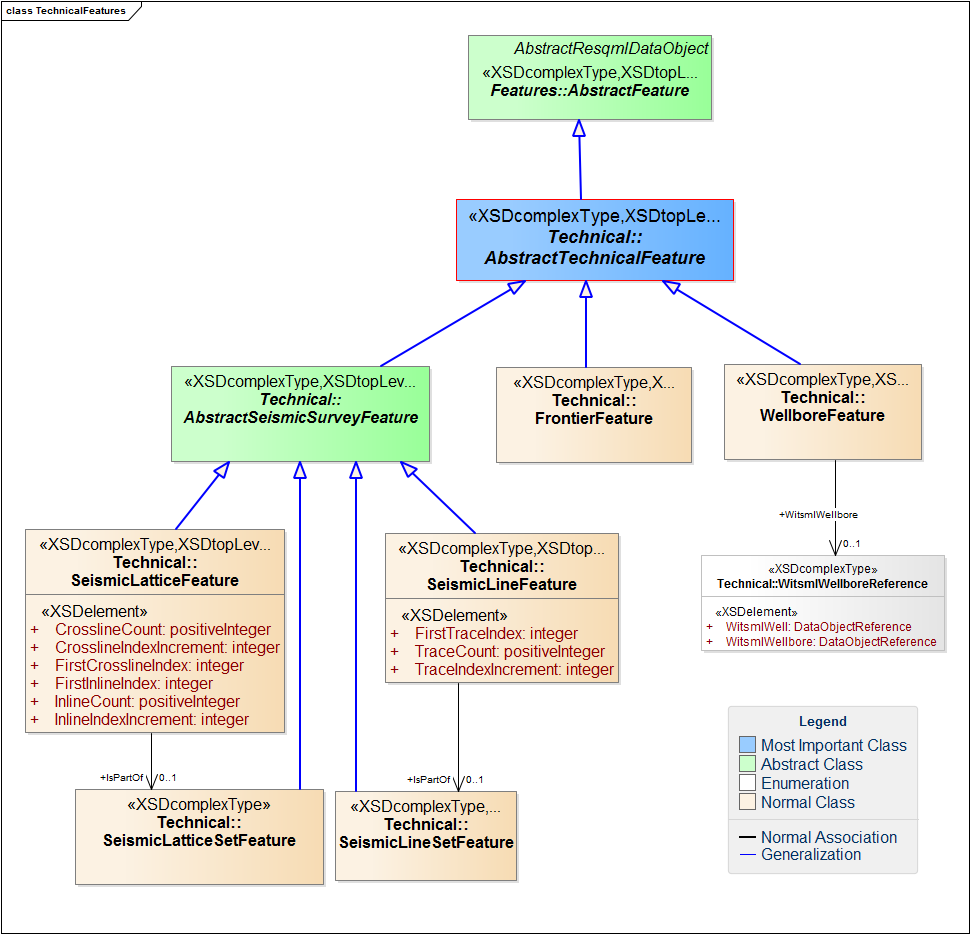9.2.1 Features
| Topic Version | 1 | Published | 09/11/2015 | |
| For Standard | RESQML v2.0.1 | |||
The abstract feature is the parent class of all the features used for exchanging structural and stratigraphic information; it includes geologic, technical, and organization features as defined above (see 5.1 Features, Interpretations, Representations , and Properties ).
The main categories of individual geologic features include (Figure 9.2.1-1):
- Boundary features, such as tectonic (fault or fracture), genetic (geobody boundary or horizon), and fluid boundaries (free water, gas-oil, gas-water, and water-oil contacts plus seal)
- Geological unit features (rock fluid feature, stratigraphic units, and geobodies)
- Rock fluid phase units, which describe either gases or liquids (aquifer, gas cap, oil column and seal)
Both stratigraphic and rock phase units are naturally bordered by genetic and fluid flow boundaries.

Technical features include (Figure 9.2.1-2):
- Seismic features, which can be defined as a set of seismic lattices to describe multiple seismic3D surveys or as a set of seismic 2D lines to characterize 2D seismic sections. For more information on seismic data, see 13 Seismic .
- Frontier feature of the studied domain used to build the volume of interest for the model area.
- Wellbore features, which describe wells in three dimensions and associated WITSML wellbore references. For more information on wells, see 12 Wells .

In RESQML, these features (geologic and technical) can be assembled into these types of organization features:
- Structural organization (surface)
- Stratigraphic (volume)
- Fluid (volume)
- Earth model (association of the previous organization features)